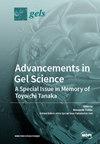Multi-Technique Assessment of Chelators-Loaded PVA-Borax Gel-like Systems Performance in Cleaning of Stone Contaminated with Copper Corrosion Products
IF 5
3区 化学
Q1 POLYMER SCIENCE
引用次数: 0
Abstract
Currently, one of the most important challenges for the conservation of stone artworks is the removal of metal corrosion products on their surfaces. Traditional cleaning methods, which typically involve the application of aqueous solutions containing chelating agents capable of complexing these metal ions, have shown some weaknesses. These weaknesses become apparent when such methods are applied to statues and other vertical surfaces or when aiming to limit the cleaning process to a specific area with controlled application times. Furthermore, the porosity of the stone surface plays a role concerning the cleaning efficiency. To address these issues, chelating agents can be incorporated into gel-like materials. This study is a proof of concept to evaluate the cleaning efficacy of various gel formulations composed of polyvinyl alcohol (PVA), borax (B), and agarose (AG), loaded with two chelators: ethylenediaminetetraacetic acid (EDTA) and potassium sodium tartrate (PST or Rochelle salt). Three types of carbonate stones (travertine, Lecce stone, and Carrara marble) characterized by different porosities were artificially stained with copper sulphates and treated with the different PVA-B-AG formulations. The effectiveness of the treatment was directly monitored on the stones using a multi-technique approach that included scanning electron microscopy with energy dispersive spectroscopy (SEM-EDS) and non-invasive portable nuclear magnetic resonance (NMR). Additionally, the rheological properties of the gels were investigated, and the Fourier transform infrared attenuated total reflection spectroscopy (FTIR ATR) was used to analyse the chemical structure of the gel before and after treatment, aiming to understand the changes induced by the cleaning process.多技术评估螯合剂负载的 PVA-Borax 凝胶状系统在清洁受铜腐蚀产物污染的石材方面的性能
目前,保护石雕艺术品最重要的挑战之一是清除其表面的金属腐蚀产物。传统的清洁方法通常是使用含有能够络合这些金属离子的螯合剂的水溶液,但这种方法存在一些弱点。当这些方法用于雕像和其他垂直表面时,或者当要将清洗过程限制在特定区域并控制使用时间时,这些弱点就会显现出来。此外,石材表面的多孔性也会影响清洗效率。为了解决这些问题,可以在凝胶状材料中加入螯合剂。本研究是一项概念验证,旨在评估由聚乙烯醇(PVA)、硼砂(B)和琼脂糖(AG)组成的各种凝胶配方的清洁效果,这些凝胶配方中含有两种螯合剂:乙二胺四乙酸(EDTA)和酒石酸钾钠(PST 或罗谢尔盐)。用硫酸铜对三种不同孔隙率的碳酸盐石材(洞石、莱切石和卡拉拉大理石)进行人工染色,并用不同的 PVA-B-AG 配方进行处理。采用多种技术方法,包括扫描电子显微镜与能量色散光谱法(SEM-EDS)和非侵入式便携核磁共振法(NMR),对石材的处理效果进行了直接监测。此外,还研究了凝胶的流变特性,并使用傅立叶变换红外衰减全反射光谱(FTIR ATR)分析了处理前后凝胶的化学结构,旨在了解清洁过程引起的变化。
本文章由计算机程序翻译,如有差异,请以英文原文为准。
求助全文
约1分钟内获得全文
求助全文

 求助内容:
求助内容: 应助结果提醒方式:
应助结果提醒方式:


